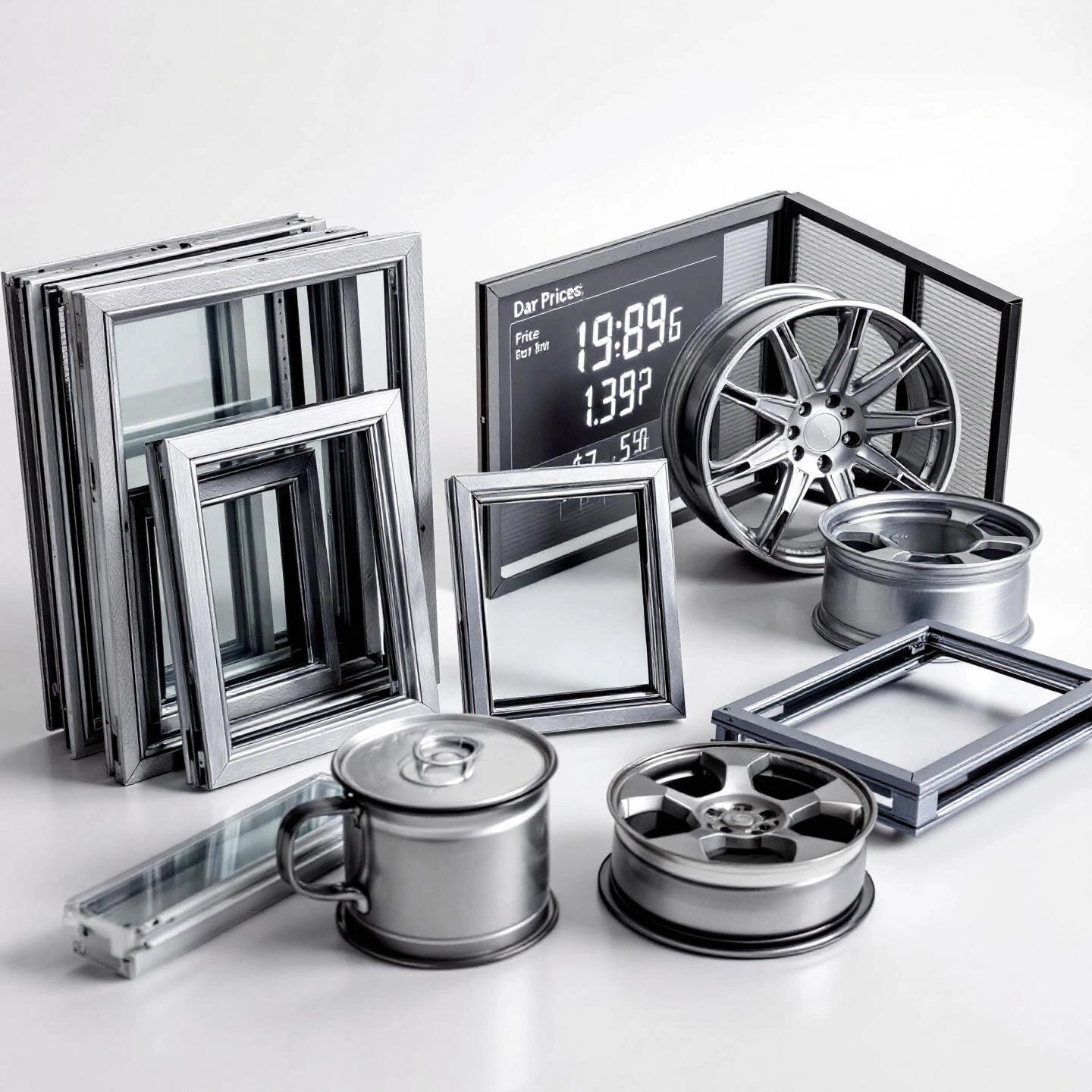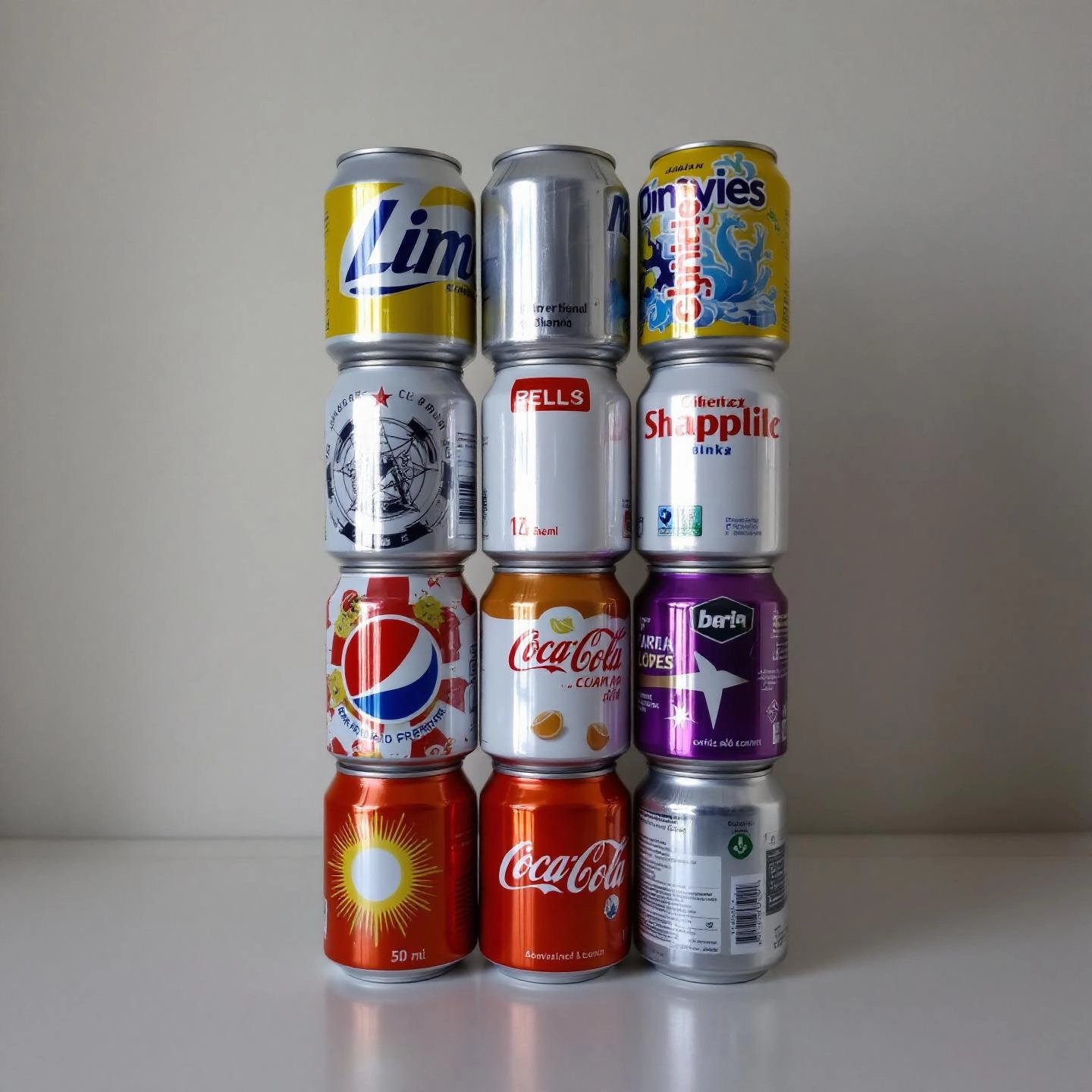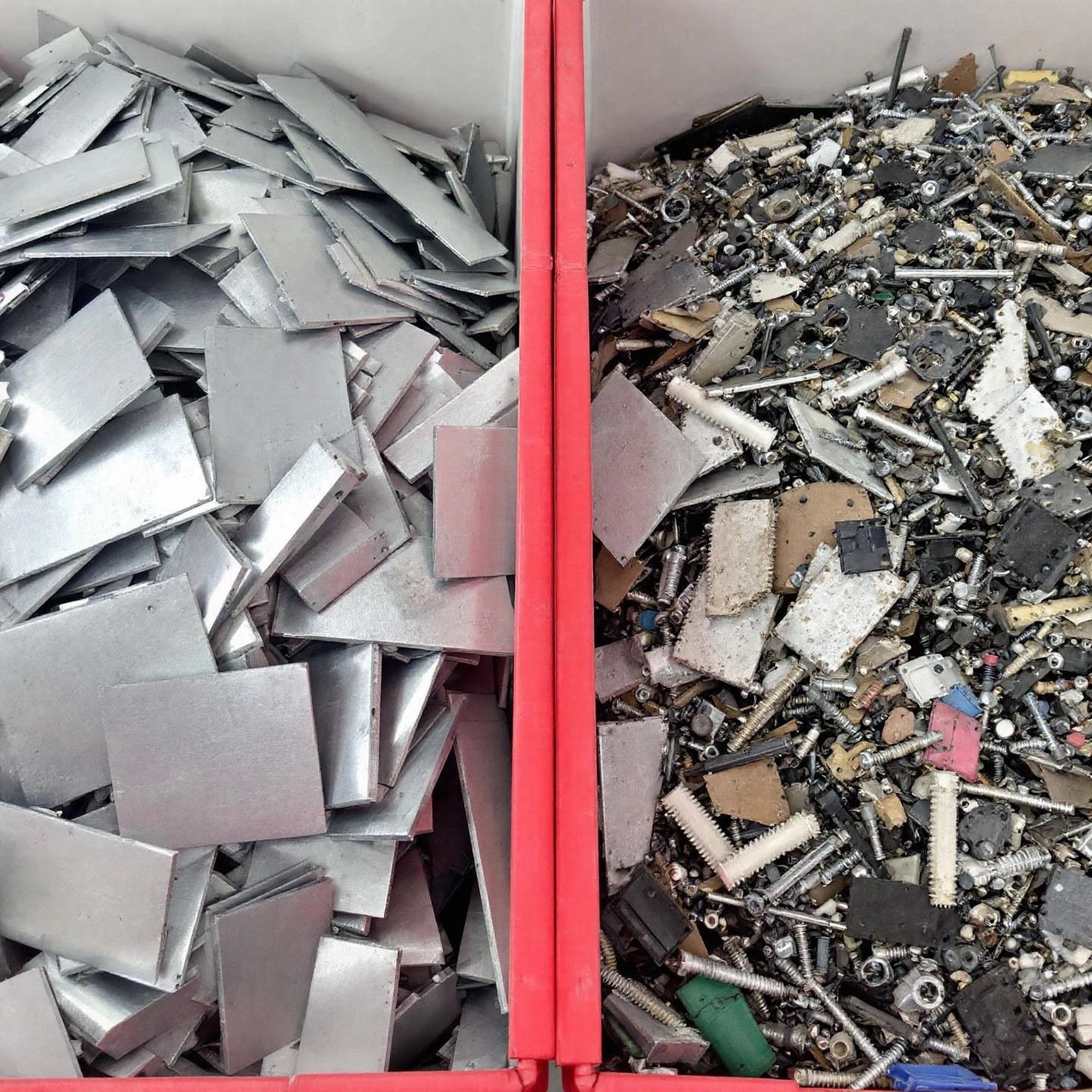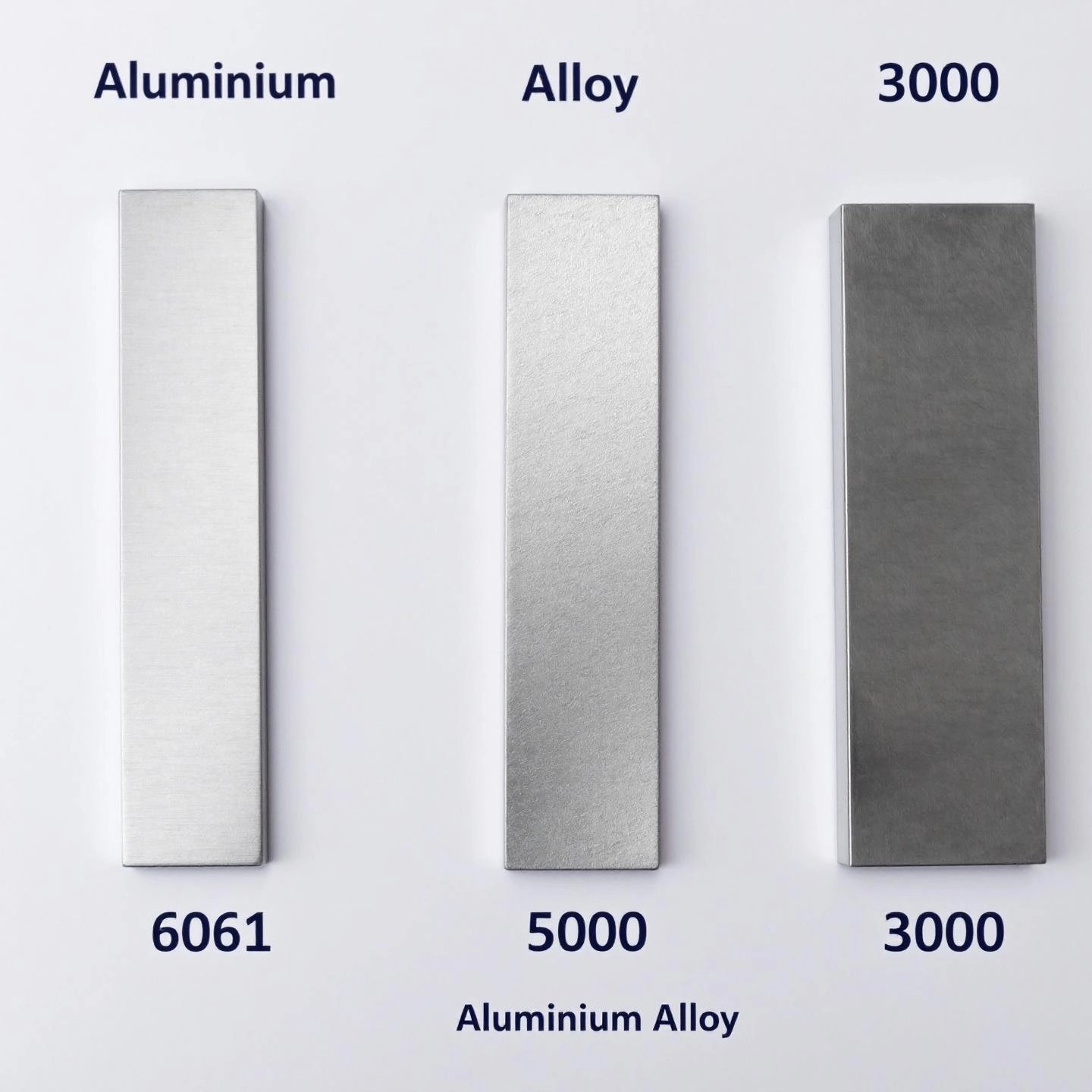
Ever wondered, "How much is aluminum per pound?" If you’ve tried to sell scrap cans or buy aluminum for a project, you’ve probably noticed that the answer changes—sometimes even from one week to the next. That’s because aluminum pricing is anything but static. It’s shaped by a wide range of global and local forces, making it essential to stay informed if you want to get the best deal or maximize your returns.
Let’s break it down: when people talk about the "aluminum price per pound," they might be referring to two very different things. First, there’s the commodity price—the rate manufacturers pay for new, pure aluminum traded on major exchanges like the London Metal Exchange (LME) or COMEX. This price is often quoted in U.S. dollars per metric ton, then converted to pounds for everyday use. For example, in June 2025, aluminum futures hovered around $2,579 per metric ton, which translates to roughly $1.17 per pound at the wholesale level (Trading Economics).
But if you’re selling aluminum scrap—whether it’s cans from your kitchen, old siding, or auto parts—you’ll see a different number. Scrap prices are what local recycling centers or scrapyards pay for used aluminum. These rates are typically lower than the commodity price, reflecting the costs of collection, sorting, cleaning, and reprocessing. Scrap prices also fluctuate daily and can vary widely depending on your location, the condition of the material, and the specific type of aluminum you have.
Sounds complex? It can be, but understanding these basics is the first step to making sense of the market. Throughout this guide, you’ll learn not just the current rates, but also why prices move, how to identify valuable types of aluminum, and practical strategies for getting top dollar—whether you’re recycling cans, selling specialty alloys, or comparing rates across different regions.
Ready to unlock the full value of your aluminum? Let’s dive in and explore everything you need to know about the aluminum price per pound in 2025.
Ever noticed how the price you get for aluminum scrap can change from one month—or even one city—to the next? If you’re wondering why, the answer lies in a web of economic, industrial, and logistical forces that shape the aluminum market every day. Let’s break down the most important aluminum price factors so you can better predict—and even influence—the payout you receive.
Imagine the LME as the "stock market" for metals. Here, aluminum is traded in massive quantities, and the prices set on this exchange ripple through every corner of the industry. Whether you’re a manufacturer in Detroit or a recycler in Dallas, the LME price is the starting point for all negotiations. However, what you see quoted on the LME is for pure, primary aluminum—scrap prices are discounted from this number.
Just like with any commodity, the balance between how much aluminum is produced and how much is needed has a huge impact on price. For example, when China, which produces more than half of the world’s aluminum, cuts back on output due to environmental policies or energy shortages, global prices can spike. Conversely, when new smelters come online or recycling rates increase, the extra supply can push prices down.
Did you know that making aluminum is one of the most energy-intensive industrial processes? In fact, electricity alone can make up nearly 40% of the total production cost. When energy prices soar—due to natural gas shortages, policy changes, or global events—aluminum production gets more expensive, and those costs are passed down the chain.
Getting aluminum from the smelter to the scrapyard—or from a mine to a factory—adds another layer of complexity. Shipping costs, port delays, and even local infrastructure can all nudge prices up or down. If you’re far from a major port or recycling center, expect to see lower payouts for your scrap due to higher transport costs.
Aluminum isn’t just for cans and cars—it’s also a financial asset. Investors buy and sell aluminum contracts to hedge against inflation or diversify portfolios. This speculative trading can make prices swing, sometimes independent of actual supply or demand. Major economic trends, like a global recession or a surge in green construction, can also shift prices dramatically.
In short, aluminum market trends are shaped by a combination of global benchmarks, regional realities, and even investor psychology. The next time you check the price at your local scrapyard, remember: you’re seeing the end result of a truly global story. Up next, we’ll zoom in on scrap aluminum cans—the most common way individuals interact with these price swings—and show you how to make the most of your recycling efforts.

When you open a cold drink, do you ever wonder what that empty can is worth? For many recyclers, aluminum cans are the most familiar—and accessible—type of scrap. But when it comes to how much is aluminum cans per pound, the answer isn’t as simple as you might hope. Prices change frequently, and what you earn depends on more than just the weight of your bag.
Aluminum cans, known in the industry as Used Beverage Cans (UBC), are a unique category in scrap recycling. They’re lightweight, made from a consistent alloy, and collected in huge quantities. This means scrap yards can process them efficiently, but prices are still set apart from other aluminum types because:
So, how much is aluminum cans per pound right now? According to recent data from scrap yards across the United States, prices typically range from $0.25 to $0.86 per pound—but there are notable outliers. For example, in California, rates can soar above $1.60 per pound, while some rural areas may offer closer to $0.10 per pound. Here’s a quick look at some sample prices from July 2025:
| Location | Aluminum Can Price (USD/lb) |
|---|---|
| Spartanburg, SC | 0.52 |
| Pittsburgh, PA | 0.60 |
| Jacksonville, FL | 0.65 |
| Omaha, NE | 0.68 |
| Anaheim, CA | 1.75 |
| Fairbanks, AK | 0.35 |
Most sellers will find their local aluminum can scrap price falls between $0.30 and $0.80 per pound, but always check with nearby scrap yards for the most accurate, up-to-date rates (Scrap Monster).
Ultimately, the best way to get top dollar is to stay informed and prepared. Next, we’ll explore how scrap yards value other types of aluminum—and how you can identify what’s in your own scrap pile for even better returns.
Ever stared at a pile of old window frames, gutters, or car wheels and wondered, "How much is scrap aluminum per pound when it’s not cans?" You’re not alone. While aluminum cans are the most familiar, there’s a whole world of aluminum scrap types—and knowing what you’ve got can make a huge difference in your payout.
Imagine cleaning out your garage, remodeling a house, or upgrading your car. You’ll likely encounter several forms of aluminum—each classified and priced differently at the scrapyard. Here’s a quick guide to help you identify and sort your aluminum for maximum value:
| Scrap Type | Typical Sources | Estimated Price Range (per lb) | Key Preparation Tips |
|---|---|---|---|
| Sheet Aluminum | Lawn chairs (no webbing), pots/pans, window frames, cable jacketing | $0.72–$0.85 | Remove screws, plastic, rubber; cut to manageable size |
| Cast Aluminum | BBQ grills, light pole bases, engine parts, molds | $0.70 | No steel, rubber, or attachments; check for hidden bolts |
| Extruded Aluminum | Window/door frames, tubing, tracks | $0.85 | Free of screws, glass, or other materials |
| Aluminum Siding/Gutters | Residential siding, gutters, downspouts | $0.72 | Clean off paint, nails, and non-aluminum parts |
| Aluminum Rims | Car/truck wheels | $1.00 (auto), $0.65 (semi) | Remove tires, lead wheel weights, and valve stems |
| Aluminum Turnings | Machining shavings, manufacturing scraps | $0.25 | Keep free of oil and steel chips |
| Breakage (Dirty Aluminum) | Mixed metal items, items with steel/plastic attached | $0.25 | Remove as much non-aluminum material as possible |
Price ranges are based on recent scrapyard averages and can change depending on region and market conditions.
Sorting and cleaning aren’t just extra chores—they’re your ticket to a better rate. Here’s how you can boost your earnings:
By following these steps, you’ll notice your payout climb—sometimes by as much as 30–50% compared to unsorted or dirty scrap. And if you’re not sure what you have, don’t hesitate to ask your local yard for grading details—they’re usually happy to help you sort for the best value.
Ready to take your aluminum recycling further? Next, we’ll explore why the condition—clean or dirty—can make or break your final payout, and how a little extra effort goes a long way.

Ever wondered why two piles of aluminum—same weight, different condition—can earn you very different payouts at the scrapyard? The answer comes down to one crucial detail: whether your aluminum is considered clean or dirty. If you’re aiming to maximize your return, understanding the difference could put more money in your pocket every single trip.
Sounds technical? It’s actually pretty simple. Clean aluminum is scrap that’s been stripped of non-aluminum materials—think screws, plastic, rubber, paint, insulation, or even stubborn dirt. In contrast, dirty aluminum still has these attachments or contaminants present. Imagine a lawn chair: if you remove the webbing and plastic feet, it’s clean; leave them on, and it’s dirty. The same goes for window frames, auto parts, and siding.
| Condition | Description | Typical Price Impact |
|---|---|---|
| Clean Aluminum | No attachments, coatings, or contaminants; pure aluminum only | Full price (highest rate per pound) |
| Dirty Aluminum | Contains non-aluminum parts: screws, plastic, paint, insulation, etc. | 30-50% less than clean aluminum |
Why such a big difference? Dirty aluminum requires extra labor and processing at the recycling facility. The more work the scrapyard has to do, the less they’ll pay you. In many cases, you’ll see the clean vs dirty aluminum price gap reach as much as 50%—so cleaning pays off.
While exact prices change by day and region, clean aluminum consistently fetches the highest rates. For example, if sheet aluminum is paying $0.85 per pound, dirty or “breakage” aluminum might only get $0.40–$0.60 per pound. That’s a significant difference, especially if you’re hauling in bulk.
So, how do you make sure your scrap is graded as clean? Try these practical preparation tips:
"The less sorting and separating the scrap yard has to do, the better pricing and grading you will typically get."
In short: a little extra effort cleaning and sorting your aluminum can mean a much bigger payout. Next, we’ll look at specialized aluminum types—like wire and cast aluminum—and how their preparation and purity can further boost your returns.
Ever stumbled upon a pile of old aluminum wire or a heavy chunk of cast metal and wondered, “Is this worth more than regular scrap?” If so, you’re asking the right questions. While most people focus on cans, siding, or sheet aluminum, specialized types like cast aluminum and wire can command higher prices—if you know how to identify, prepare, and sell them.
Not all aluminum is created equal. In the world of scrap, cast aluminum and aluminum wire are recognized for their unique properties and, often, their higher payouts. But what sets them apart?
So, what’s the cast aluminum price per pound and how does aluminum wire scrap price compare? Here’s what you’ll typically see at reputable scrap yards as of July 2025:
| Type | Typical Sources | Preparation Required | Estimated Price (per lb) |
|---|---|---|---|
| Cast Aluminum | Engine parts, grills, patio furniture, lamp bases | No steel, rubber, or attachments | $0.70 |
| Aluminum Wire (Clean) | Electrical wiring, industrial cables | Remove insulation, ensure no steel core | Varies (typically $0.55 for sheet, higher for pure wire) |
For example, JR’s Advanced Recyclers lists cast aluminum at $0.70 per pound, provided it’s clean and free of attachments. Clean aluminum wire—meaning wire that’s been stripped of insulation and contains no steel or residue—often fetches a premium, though prices can fluctuate based on purity and local demand (Rockaway Recycling).
Taking these extra steps ensures your scrap is graded as "clean," unlocking the highest possible rate per pound.
Ever wonder why some scrap aluminum fetches a premium, while other batches are discounted? It all comes down to the original manufacturing standards. High-quality aluminum—free of impurities and produced to strict specifications—recycles more efficiently, resulting in better payouts for sellers and higher-quality material for manufacturers.
This is where companies like Shengxin Aluminum make a difference. As a leader in high-quality aluminum manufacturing, Shengxin is known for its advanced extrusion processes, rigorous quality control, and commitment to purity. Their products—ranging from extrusion profiles to complex industrial components—set the bar for recyclability and performance in the global market. When scrap yards encounter aluminum from reputable sources like Shengxin, they know they’re dealing with material that meets the highest standards, which can translate to better prices for everyone in the supply chain.
In short, if you’re recycling specialized aluminum like wire or cast pieces, preparation and purity are everything. And if you’re buying or specifying aluminum for manufacturing, choosing a supplier with a reputation for quality—like Shengxin Aluminum—ensures your material will hold its value long after its first use. Next, we’ll explore how different aluminum alloys impact pricing, and why knowing your alloy type can make a big difference at the scrapyard and beyond.

Ever noticed how two pieces of aluminum—same size, different background—fetch very different prices at the scrapyard? Or wondered why a chunk of 6061 alloy brings in more than a strip of basic sheet? The secret lies in the world of aluminum alloys, where the mix of elements and the intended use can make a big difference in both performance and payout. Let’s break it down so you can spot value and maximize your returns.
Aluminum isn’t always pure. In fact, most of what you see—whether it’s in cars, airplanes, or window frames—is an alloy: a blend of aluminum with other elements like magnesium, silicon, copper, or zinc. Each alloy is engineered for specific properties—strength, corrosion resistance, formability, or conductivity. This means that knowing your alloy type isn’t just for engineers; it’s crucial for anyone buying, selling, or recycling aluminum.
Imagine sorting a pile of scrap. How do you know what’s valuable? Start by identifying the alloy series. Here’s a quick guide to the most common types you’ll encounter:
Each series has its own density, strength, and scrap value. For example, 6061 aluminum is highly sought after for its mechanical properties and versatility, making it a favorite in both manufacturing and recycling circles.
Let’s get specific: how much is 6061 aluminum per pound? As of July 2025, the national average for 6061 aluminum scrap in the U.S. is around $0.60 per pound, with regional highs and lows ranging from $0.37 to $0.80 per pound depending on location and market conditions (Scrap Monster). This is generally higher than the price for mixed or unalloyed scrap, reflecting 6061’s superior properties and demand in industries like aerospace and automotive.
| City | 6061 Scrap Price (USD/lb) |
|---|---|
| Houston, TX | 0.80 |
| Salt Lake City, UT | 0.66 |
| Oklahoma City, OK | 0.60 |
| Gibsonton, FL | 0.37 |
Always check with local yards for the latest aluminum alloy scrap price, as rates can shift quickly with market demand.
Imagine showing up at the scrapyard with a load of unidentified metal. Unless you know your alloys, you might end up with the lowest rate. But if you can prove you’ve got 6061 or another high-value series, you’re in a much stronger negotiating position. For sellers, sorting and labeling your alloys pays off. For buyers and manufacturers, using the right alloy ensures product performance and safety.
When it comes to producing high-grade aluminum alloys and advanced profiles, Shengxin Aluminum stands out as an industry leader. Their expertise in manufacturing precision-engineered alloys, including 6000 series extrusions, ensures that both recyclers and end-users benefit from consistent quality and high purity. Shengxin’s rigorous quality control and advanced production techniques mean their profiles are trusted in demanding sectors—from rail transit to energy-saving construction projects.
In short, whether you’re recycling scrap or sourcing material for your next project, understanding the value difference in aluminum alloys—and working with reputable suppliers like Shengxin—can make all the difference in both price and performance. Next, we’ll explore how your location impacts aluminum pricing, and what you can do to find the best rates near you.
Ever searched for how much is aluminum per pound near me and found a price that’s wildly different from what your friend got in another city? You’re not imagining things—regional price swings are a real (and sometimes frustrating) part of the aluminum scrap world. But why do these differences exist, and how can you make sure you’re getting the best regional aluminum scrap price in your area? Let’s break it down with practical examples and clear explanations.
Imagine two scrapyards: one in a bustling port city, the other in a rural area hundreds of miles from major industry. Even if both yards are buying the same type of aluminum, their prices can differ by 20–40% or more. Here’s why:
So, how can you quickly check how much is aluminum per pound near me—and be sure you’re getting the best deal? Try these steps:
In short, regional aluminum scrap price differences are shaped by a mix of geography, economics, and local market forces. By staying informed and comparing rates, you’ll be able to make smarter decisions and get the most for your scrap—no matter where you are. Up next, we’ll share a practical checklist for finding today’s best price at a scrapyard near you, so you can turn local knowledge into real returns.

When you’re ready to cash in your aluminum, the question on your mind is simple: How much is aluminum per pound at the scrapyard? But as you’ve seen, the answer isn’t always straightforward. Prices shift daily, and what you walk away with depends on more than just the weight of your load. To help you get the best scrapyard aluminum price, here’s a step-by-step checklist—packed with real-world tips to make every pound count.
"The more organized and informed you are, the better your chances of getting top dollar for your aluminum."
By following this checklist, you’ll move from guessing to knowing when it comes to scrapyard aluminum price. With a bit of preparation and research, you’ll consistently get the best possible rate—turning your scrap into real savings. In the final section, we’ll recap the key strategies to maximize your aluminum scrap value and highlight the importance of choosing reputable partners throughout the supply chain.
When you think about turning aluminum scrap into cash, it’s easy to focus on the day’s price per pound. But as you’ve seen throughout this guide, the real secret to maximizing your aluminum scrap value lies in understanding the bigger picture. Let’s recap the key factors that shape what you earn—and how you can consistently get the best price for aluminum per pound, no matter where you are or what you’re selling.
Imagine two sellers: one brings in a mixed bag of uncleaned scrap, the other arrives with sorted, clean, and well-documented material. The second seller almost always walks away with a better payout. Why? Because scrapyards reward preparation. Here’s a quick checklist to keep you ahead:
Whether you’re selling scrap or sourcing new aluminum for manufacturing, the quality of your partners makes a difference. Working with reputable recyclers ensures fair grading, transparent pricing, and a smooth selling experience. On the manufacturing side, choosing a supplier known for high standards—like Shengxin Aluminum—means your material will hold its value, perform reliably, and be easier to recycle when its lifecycle ends.
Shengxin Aluminum stands out as a leader in the aluminum supply chain, offering advanced alloys, precision profiles, and sustainable manufacturing practices. Their commitment to quality and innovation benefits everyone—from industrial buyers to everyday recyclers—by ensuring that aluminum remains a valuable, eco-friendly resource for years to come (Shengxin Aluminum Blog).
In summary: To consistently get the best price for aluminum per pound, combine market savvy with careful preparation and trusted partnerships. By staying informed, sorting and cleaning your scrap, and choosing industry leaders like Shengxin Aluminum, you’ll maximize your returns—now and into the future.
The value of 1 lb of aluminum varies by type and location. Scrap aluminum typically ranges from $0.25 to $1.00 per pound, with clean, sorted aluminum fetching higher prices. For example, aluminum cans may pay $0.30–$0.80 per pound, while premium alloys like 6061 can reach $0.80 per pound in some regions. Always check with local scrapyards for the most accurate rate.
To earn $100 from aluminum cans, you need to know the local price per pound. If the average rate is $0.55 per pound, you would need about 182 pounds of cans to reach $100. Rates fluctuate by region and market conditions, so check current prices with local recyclers before collecting.
The price for one pound of aluminum depends on its form and purity. Commodity-grade aluminum may be valued around $1.17 per pound at the wholesale level, while scrap aluminum prices typically range from $0.25 to $0.85 per pound. Premium alloys and clean, sorted scrap can command higher rates.
Aluminum prices differ by region due to factors like proximity to ports, transportation costs, local competition among scrapyards, and state recycling programs. Urban areas or regions with strong recycling incentives often offer higher payouts than rural locations.
To maximize your aluminum payout, sort and clean your scrap, check current rates at several scrapyards, confirm grading standards, and sell in bulk when possible. Working with reputable recyclers and staying informed about market trends can also help you secure the highest price.
 Servicio en línea
Servicio en línea 0086 136 3563 2360
0086 136 3563 2360 sales@sxalu.com
sales@sxalu.com +86 136 3563 2360
+86 136 3563 2360